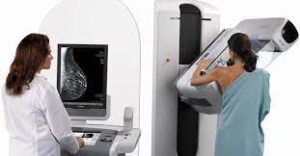Mammograms
Thu 10:44 am +01:00, 2 Jun 2022 4
For decades now, just about every attempt to show that medical screening programmes save lives has proved that they are a waste of time, energy and money. Indeed, surveys have proved that, because of the risk of false positives, medical screening programmes do far more harm than good.
Patients are frequently invited to their doctor’s surgery for a screening test or a health check. Family doctors are sometimes paid huge bonuses if they perform routine health checks on some elderly patients.
The principle of screening is a simple one: the patient trots along to the doctor and the doctor (for a chunky, great fee, of course) does tests which are designed to spot early signs of disease.
The tests which are offered are done because the medical establishment has managed to convince bureaucrats that screening is worth paying for.
Doctors are enthusiastic about screening because it’s enormously profitable. And they’re very lukewarm about encouraging their patients to follow healthier lifestyles because there is no money in it.
But consider mammograms, for example.
It was in 1988 that I first warned about the danger of mammograms. My criticism was, of course, greeted with howls of outrage from the medical establishment. Back then I wrote: ‘There are, of course, risks in having regular X-ray examinations. No one knows yet exactly what those risks are. We will probably find out in another ten or twenty years’ time.’
In fact it was in 2006 (just two years earlier than I had predicted) that doctors finally issued a warning about mammograms, coming to precisely the conclusion I had warned about eighteen years earlier. Mammographic screening may help prevent breast cancer. But it may also cause breast cancer. Just how many women die because of the radiation they have received through mammography isn’t known but it seems that the risks for younger women (women in their 30’s for example) are higher than the risks for older women. (Radiation-induced cancer typically takes up to 20 years to develop, so for a woman in her 80’s the risks of mammography are probably somewhere between slight and negligible.) According to some estimates, out of every 10,000 women who have mammograms from the age of 40 onwards, between two and four will develop radiation-induced breast cancer. One of them will die as a result of this. The precise figures are unknown and depend upon the quality and amount of the radiation, the skill of the technician and other factors — probably including the general health of the woman concerned.
Doing a mammogram when a lump has been found (or after a cancer has previously been diagnosed and treated) is a very different proposition.
And much more worthwhile.
Taken from `Medical heretics’ by Vernon Coleman –available as a paperback.
Copyright Vernon Coleman June 2022
https://www.vernoncoleman.com/main.htm



Oncologists know this and that’s why women who research have discovered thermography. This is not only non-invasive but it picks up tumours much earlier than the mammogram.
I believe that the procedure is unpleasant too, similar to having your “boobs” shut in a fridge door. I am at the stage now, where I honestly doubt they’d do it unless they could make money out of it. It’s not there to help you.
That’s the reason for so many medical practices. Chemotherapy which cures around 2.3% of patients costs a fortune. There are so many alternative choices out there but we have to find them ourselves.
Imagine if during the plandemic we’d been told to eat healthy food, get sunshine, plenty of sleep and plenty of exercise and if they’d closed all the junk food outlets. If it hadn’t been invented as a fear-mongering money spinner, that’s what people would have been told.
Yes Belyl, David Noakes and Linda Thyer were jailed for producing GCMaf and curing cancer patients. Notice how all the self proclaimed elite live really long lives, then you see collection boxes everywhere for cancer research. Sickening.